Deep frying is one cooking method in which food is fully submerged in very hot oil. It is typically done in a fryer loaded with a lot of frying oil and heated to an optimum temperature. While this is the case for cooking, cleaning means that oil should be completely removed. Knowing how to cool frying oil fast can make cleaning up easier.
You can quickly cool hot oil by:
- Carefully transfer hot oil to a heat/cold-resistant container.
- Set the oil-filled container into a larger container partially filled with cold water.
- Add ice along the sides to decrease the temperature more rapidly.
Use extreme caution when maneuvering hot oil to ensure that the exterior container is not too hot to handle, or use potholders to do so. Avoid spills as combining hot oil and water can create splatters and cause burns.
With frying oil being used generously in many cooking methods, it is important to know that being able to cool it properly will help you clean out your cookware. It is also important to know about other information that relates to using frying oil, and fortunately, we've collated some of them in this article, so keep on reading to learn more.
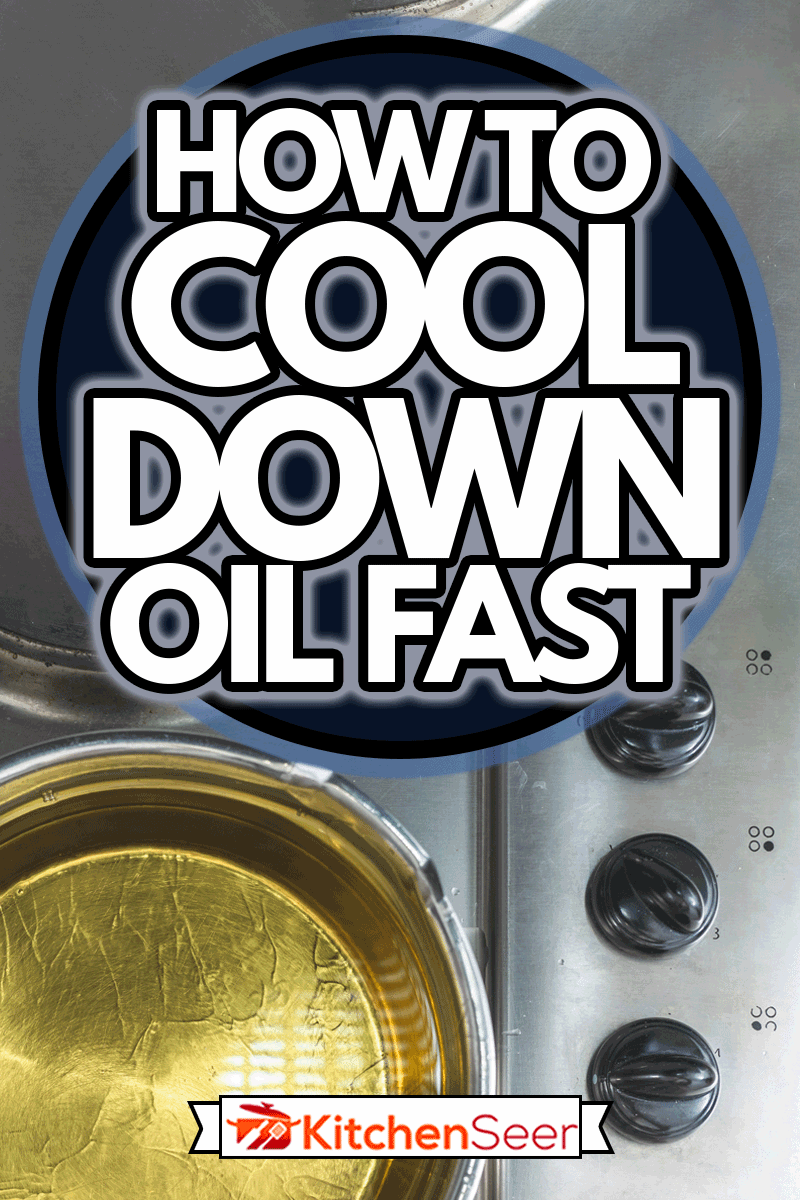
How To Cool Down Oil Fast
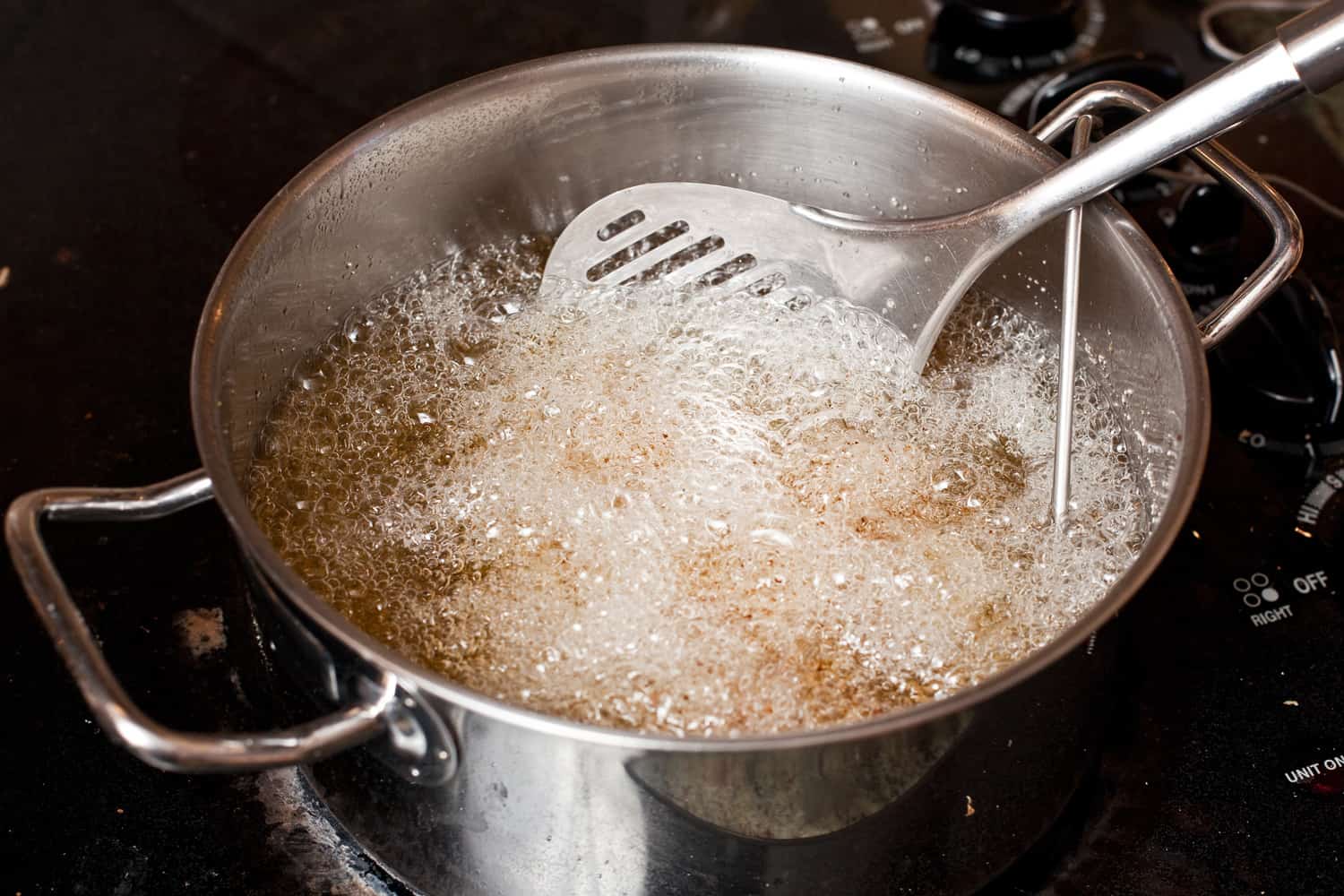
Deep frying is a cooking method typically used for those rich, super savory fried dishes everybody loves. It results in the food cooking faster, making the food really moist on the inside and crispy on the outside.
But before we can get to the crispy, juicy fried morsels that we love, deep frying requires oil to be heated at an optimum temperature. This is done by heating the oil over medium-high heat until the oil reaches its required temperature. If an electric deep fryer is going used, it is still imperative for the oil to reach a high temperature.
After using the oil for frying food, you can still reuse oil another time as long as the oil does not get oxidized. Unfortunately, if you leave the oil in the deep fryer to cool down, oxidation occurs, and it leaves the frying oil rancid, making your food taste bad. Before you keep your frying oil to use for another time, it should be properly cooled down before storage.
Cooling down oil is also important if you are about to clean your deep fryer and other cookware. It is always good practice to immediately remove oil from the heat as soon as possible to prevent the grease from building up onto your cookware and fryer.
The quickest way to cool down your cooking oil is by transferring it to a heat/cold-resistant container. Get a container that is bigger than the one you put your oil in and put water in it; only partially fill as the water might overflow otherwise.
Place the oil container in this larger, water-filled container and add ice to the sides to aid the fast cooling down of your used frying oil. Be extremely careful to not spill water or oil into one another -it can splatter and cause a burn! The heat coming from the underside of your oil-filled container will dissipate with the help of the ice and water surrounding it.
How Long Does It Take For Cooking Oil To Cool Down?
Generally speaking, cooking oil that has been used for frying takes about 1-1/2 to 2 hours for it to cool down on its own. This is typically done by leaving the oil in the deep fryer or pot until the used cooking oil is already safe to handle.
The downside of leaving cooking oil to cool down on its own is oxidation. When air meets the hot oil, it hastens the oxidation process, causing the cooking oil to become rancid and unusable. This makes it unsuitable for re-use as the food will taste bad when this oil is used.
If you'd like to cool down your cooking oil in order to be used again, make sure to follow the proper way of cooling it down. Try not to leave it out for too long as it will break down your cooking oil, and it won't be good to use anymore.
How Do You Tell If The Cooking Oil Is Hot Enough For Frying?
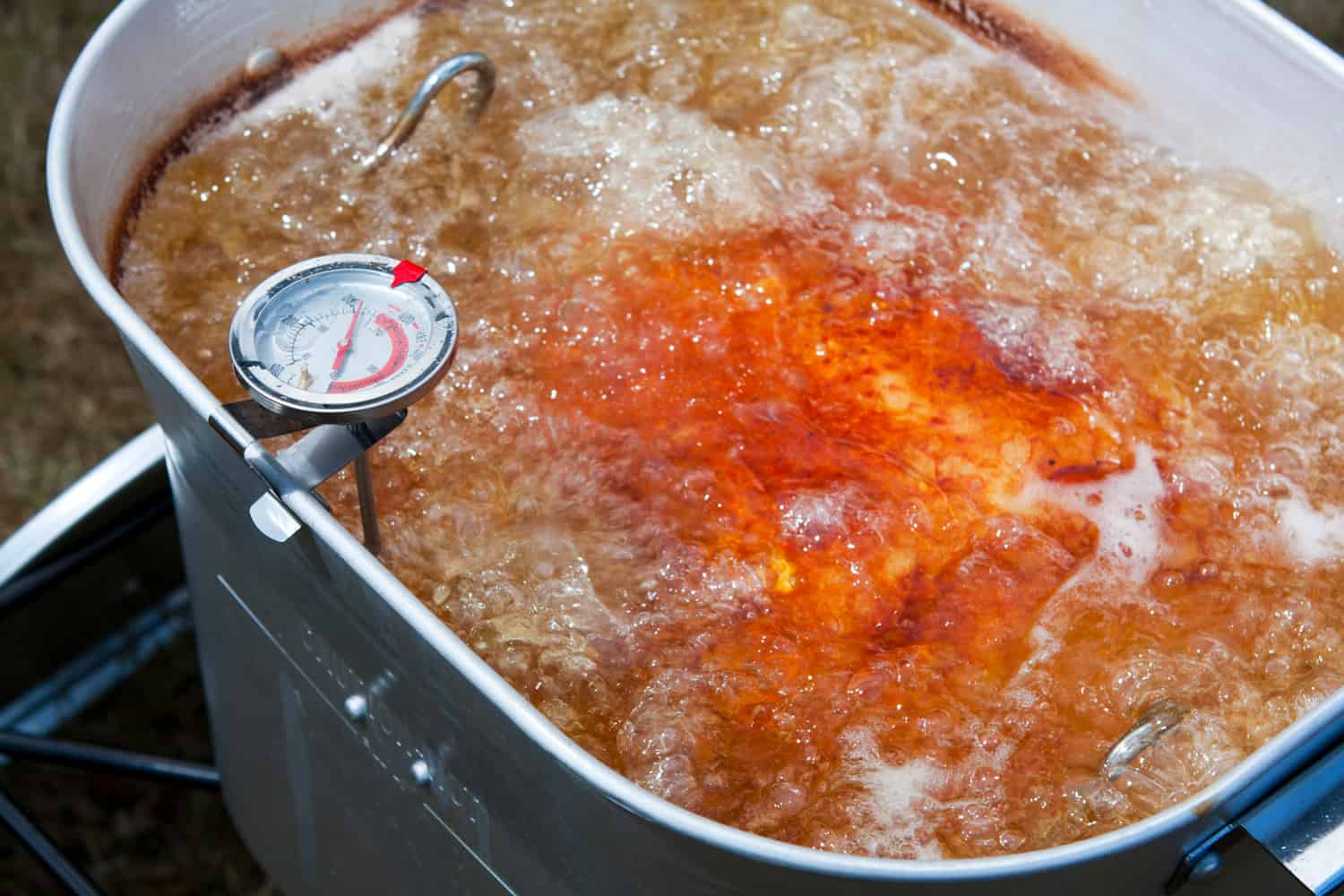
When deep-frying, oil should be heated at a very high temperature. Ideally, frying oil should be at a temperature between 350 to 375°F for it to be hot enough for cooking. You can achieve this by heating the oil over medium-high flame or with the electric thermostat of your deep fryer.
One way to check if the oil is hot enough for cooking is to use a candy thermometer to measure the temperature. Simply clip it on the side of your pot and check if the oil has reached the ideal temperature. However, there are also other methods that you can do if you don't have a candy thermometer.
If you don't have a candy thermometer, you can use your trusty wooden spoon or wooden chopsticks. Dip the handle of your wooden spoon or chopstick into the oil without touching the bottom of your pot. If bubbles appear around your spoon or chopstick right away, your oil is hot and ready to go.
How Do You Lower The Temperature of Oil for Cooking?
When deep-frying, the temperature of the hot oil immediately decreases when cold food is added to it. The more food you add for cooking, the lower the temperature of your heated oil will go. This is one of the reasons why you shouldn't overcrowd your pot when deep-frying because it will make the oil too cold, and it will make the food look wilted and greasy.
If you find that you have overheated your cooking oil beyond its ideal temp, the fastest way to cool this down is to lower the heat until it reaches the desired temperature. Conversely, you can also add more cold cooking oil bit by bit to your pot to lower the temperature.
Frying Mistakes And How To Avoid Them!
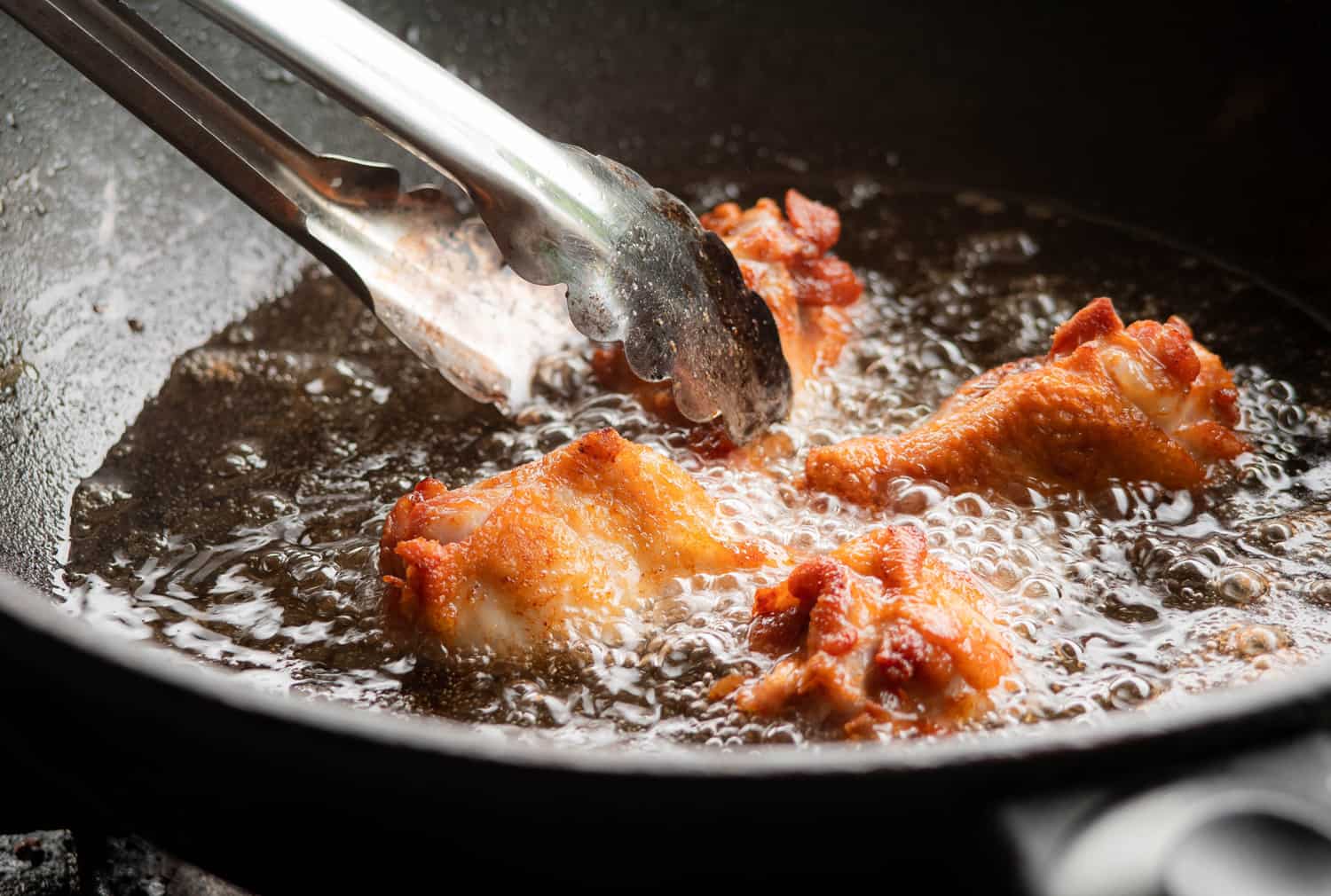
1. Avoid overspilling
Prevent this mistake by using a nonreactive, heavy pot that has high sides. Do not put in too much oil than what is needed because when you add your ingredients inside the pot it might cause the oil to spill over. Not only is this very messy, but oil and flames can be a disastrous combination.
2. Cooked on the outside, raw on the inside
When this happens, this typically means that your oil is already too hot for cooking. This rapidly overcooks the outside without giving it a chance to cook the inside properly. One of the best ways to prevent this is to invest in a deep fat thermometer or a candy thermometer to check if the oil is still at its optimum range while cooking.
3. Limp and greasy fried food
This happens on the opposite end of the spectrum—limp and greasy food means that your oil isn't hot enough for cooking. When frying, oil that isn't hot enough gets absorbed by the food, thereby making it soggy and limp.
You can prevent this from happening by constantly checking on the temperature of your food, and don't forget to drain the oil after cooking.
4. Prevent oil splatters
Hot oil splatters happen when water and hot oil meet each other, causing fireworks in the kitchen you don't want to experience. We all know that water and oil don't mix, more so if it is cold water and hot oil.
Keep this mistake from happening by making sure to pat dry your food before deep-frying and to put it into your pot in an away from you motion. This helps the hot oil splatter move away from you instead of hitting you on your arms or face.
5. Use the right oil
There are a lot of oils available on the market, but not all of them are made for deep-frying. Whenever you plan to deep-fry food, make sure to use an oil that has a high smoke point, such as av0cado oil, canola oil, peanut oil, or corn oil. Leave out the other oils like olive oil and other low-smoke point oils for other uses because they burn too quickly.
Final Thoughts
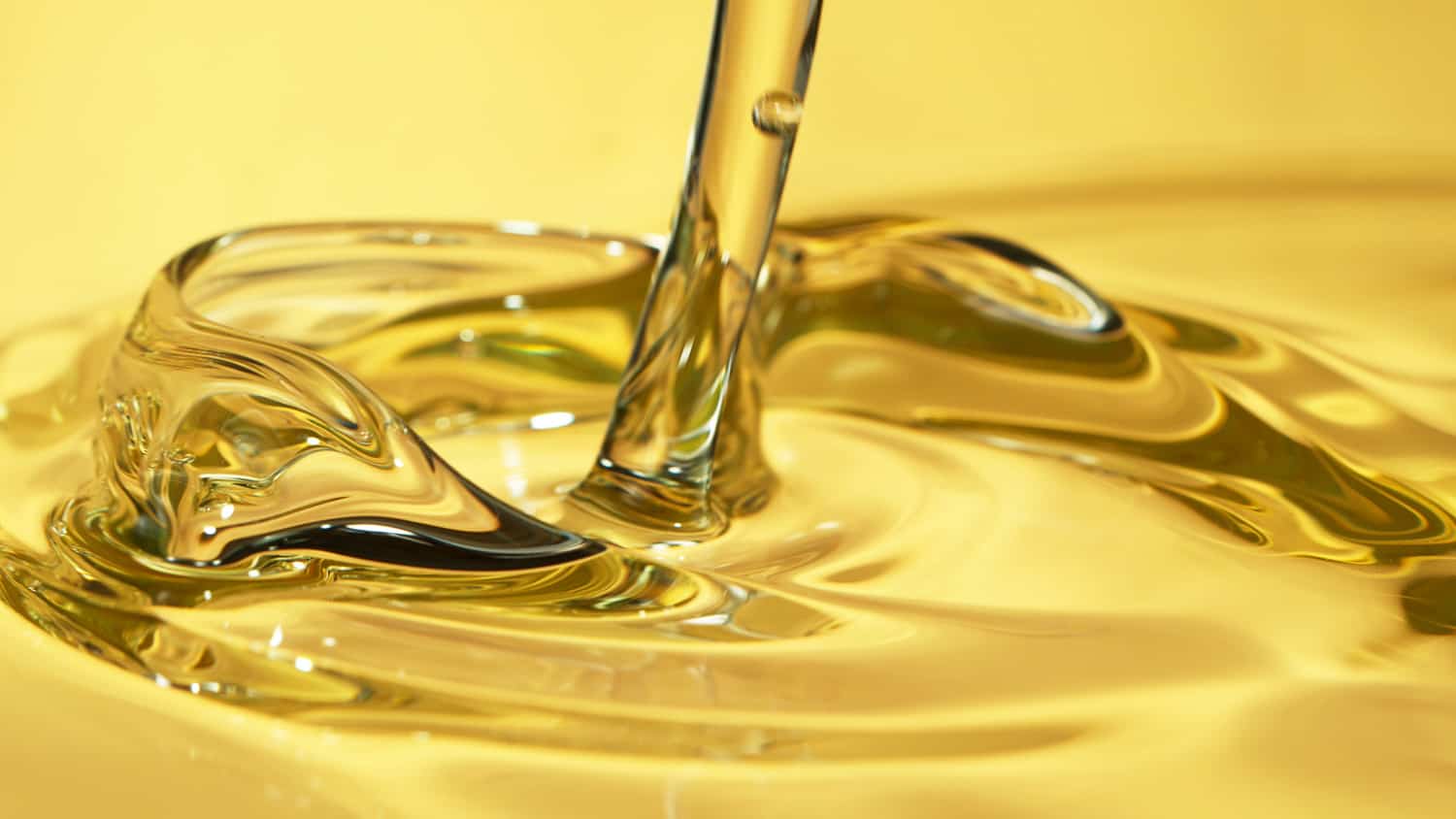
Normally cooking oil should be heated to a very high temperature for it to result in food being moist and crispy. However, one caveat of frying is that oil should be properly cleaned out of your frying cookware. This requires correct cooling methods for used cooking oil so that it could be handled properly.
There are many ways to do this, but the proper way is by using water and ice to help aid the oil's cooling down process. Doing this method will ensure that your cooking oil is properly cooled, will be safe to handle, and can be reused again.
Are you looking for more information about frying oil? We have some articles that might be of interest:
Does Frying Oil Go Bad? How Long Does It Last?

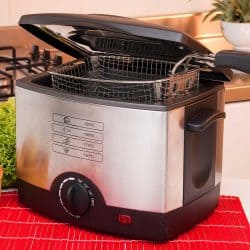
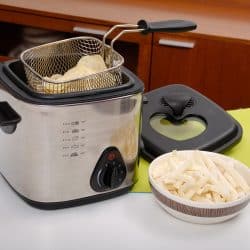

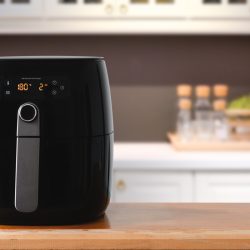
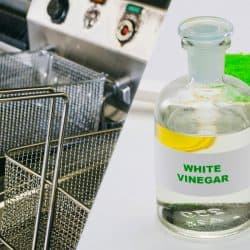
![Close up view of Ninja Foodi air fryers for sale inside a Target retail store, How To Use Ninja Air Fryer [Complete Guide]](https://kitchenseer.com/wp-content/uploads/2023/03/Close-up-view-of-Ninja-Foodi-air-fryers-for-sale-inside-a-Target-retail-store.-250x250.jpg)